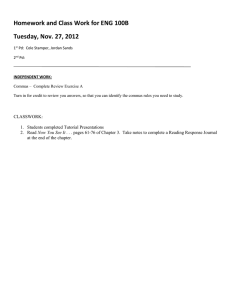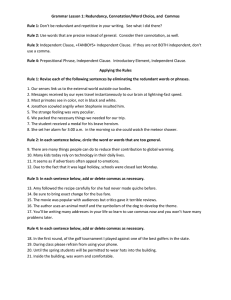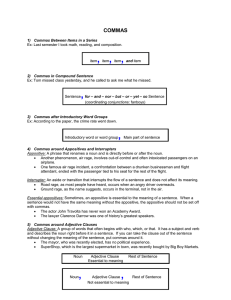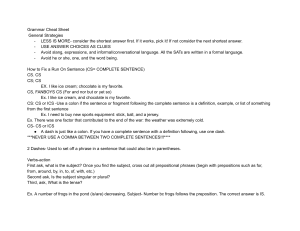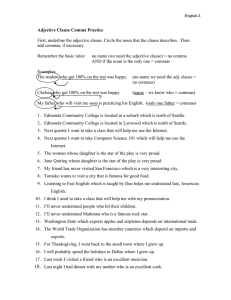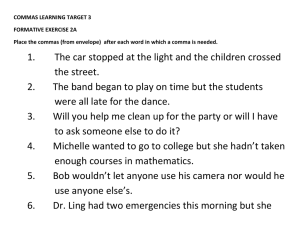Structure Definition Punctuation Role
advertisement
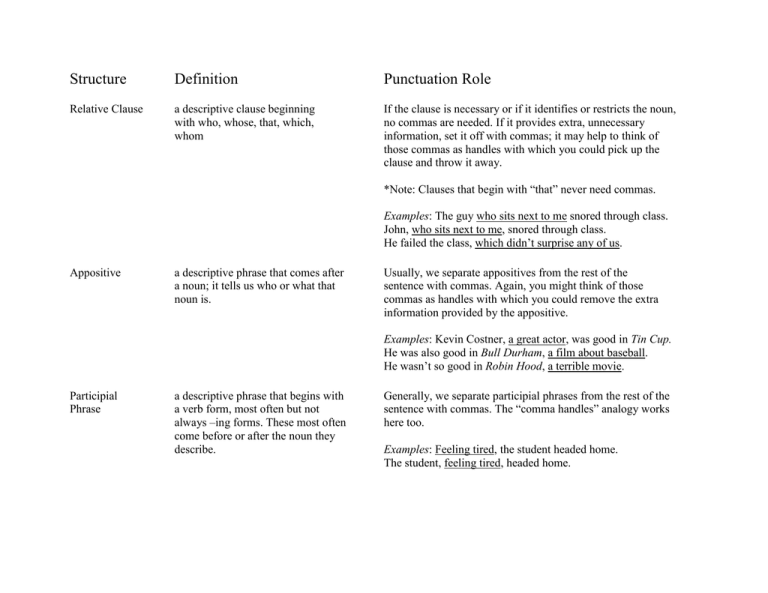
Structure Definition Punctuation Role Relative Clause a descriptive clause beginning with who, whose, that, which, whom If the clause is necessary or if it identifies or restricts the noun, no commas are needed. If it provides extra, unnecessary information, set it off with commas; it may help to think of those commas as handles with which you could pick up the clause and throw it away. *Note: Clauses that begin with “that” never need commas. Examples: The guy who sits next to me snored through class. John, who sits next to me, snored through class. He failed the class, which didn’t surprise any of us. Appositive a descriptive phrase that comes after a noun; it tells us who or what that noun is. Usually, we separate appositives from the rest of the sentence with commas. Again, you might think of those commas as handles with which you could remove the extra information provided by the appositive. Examples: Kevin Costner, a great actor, was good in Tin Cup. He was also good in Bull Durham, a film about baseball. He wasn’t so good in Robin Hood, a terrible movie. Participial Phrase a descriptive phrase that begins with a verb form, most often but not always –ing forms. These most often come before or after the noun they describe. Generally, we separate participial phrases from the rest of the sentence with commas. The “comma handles” analogy works here too. Examples: Feeling tired, the student headed home. The student, feeling tired, headed home.
